What is Joint Pain ?
Joint pain refers to discomfort, soreness, or aching sensations in one or more of the body’s joints. Joints are the areas where two or more bones meet, and they allow for movement and flexibility in the body. Joint pain can range from mild to severe and may be acute (short-term) or chronic (long-term).
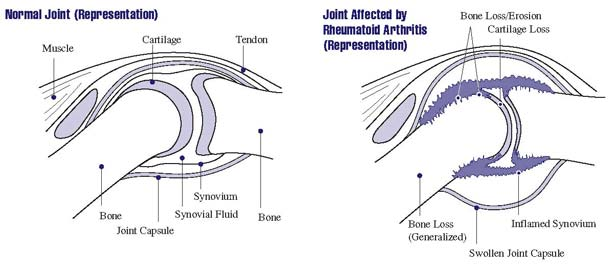
It can affect people of all ages and is a common complaint, often caused by a variety of factors. Here are some key aspects of joint pain:
- Common Symptoms: Joint pain is typically characterized by pain, stiffness, swelling, and reduced range of motion in the affected joint. These symptoms may occur suddenly or develop gradually over time.
- Causes of Joint Pain:
- Arthritis: Various forms of arthritis, such as osteoarthritis, rheumatoid arthritis, and gout, are common causes of joint pain. These conditions involve inflammation, wear and tear, or autoimmune responses that affect the joints.
- Injury or Trauma: Joint pain can result from injuries like sprains, strains, dislocations, or fractures. These injuries can damage the joint structures and lead to pain and swelling.
- Overuse: Repetitive motions or excessive stress on a joint, often from sports or certain occupational activities, can lead to overuse injuries and joint pain.
- Infection: Bacterial, viral, or fungal infections can sometimes affect the joints, causing conditions like septic arthritis.
- Autoimmune Diseases: Conditions like lupus, psoriatic arthritis, and ankylosing spondylitis involve the body’s immune system attacking its own joints, leading to inflammation and pain.
- Other Medical Conditions: Certain medical conditions, including fibromyalgia, Lyme disease, and certain cancers, can cause joint pain as a symptom.
- Age and Wear and Tear: As people age, the joints may experience wear and tear, leading to conditions like osteoarthritis.
- Obesity: Excess body weight can put added stress on weight-bearing joints, leading to joint pain and osteoarthritis.
How to Relieve Joint Pain ?
Relieving joint pain often involves a combination of lifestyle changes, home remedies, and medical interventions. The approach you choose may depend on the cause and severity of your joint pain. Here are some strategies to help relieve joint pain:
- Rest and Protect the Joint:
- Avoid overuse or excessive strain on the affected joint.
- Use assistive devices like crutches or braces, if necessary, to reduce stress on the joint.
- Apply Ice or Heat:
- For acute joint pain or swelling, apply ice to the affected area for 15-20 minutes every few hours during the first 48 hours.
- For chronic joint pain, heat therapy (warm compress or heating pad) can help relax and loosen tissues and stimulate blood flow to the area.
- Over-the-Counter (OTC) Pain Relievers:
- Topical Pain Relief:
- Over-the-counter creams, gels, or patches containing capsaicin, menthol, or salicylates can provide localized relief when applied to the skin over the painful joint.
- Maintain a Healthy Weight:
- Excess body weight can put extra stress on weight-bearing joints, such as the knees and hips. Losing weight can reduce joint pain, especially in cases of osteoarthritis.
- Exercise Regularly:
- Engage in low-impact exercises like swimming, cycling, or walking to help strengthen the muscles around the affected joint and improve joint function.
- Consult a physical therapist for a tailored exercise program.
- Stretching and Range-of-Motion Exercises:
- Gentle stretching and range-of-motion exercises can help improve joint flexibility and reduce stiffness.
- Joint Protection:
- Use proper body mechanics and joint protection techniques when performing daily tasks to minimize stress on joints.
- Use ergonomic tools and aids, if necessary.
- Balanced Diet:
- Consume a well-balanced diet rich in anti-inflammatory foods like fruits, vegetables, whole grains, and fatty fish (e.g., salmon, trout) with omega-3 fatty acids.
- Limit processed foods, sugary drinks, and foods high in saturated fats.
- Hydration:
- Staying adequately hydrated can help maintain joint health and reduce stiffness.
- Supportive Footwear:
- Choose comfortable, supportive shoes with cushioning and proper arch support, especially if you have joint pain in your feet or knees.
- Orthotics and Assistive Devices:
- Custom-made orthotic inserts or joint braces can provide additional support and relieve joint pain, especially for conditions like osteoarthritis.
- Physical Therapy:
- Consult with a physical therapist for personalized exercises and techniques to improve joint function and reduce pain.
- Medications:
- In some cases, healthcare providers may prescribe stronger pain relievers or disease-modifying medications for certain conditions like rheumatoid arthritis.
- Injections:
- Corticosteroid injections or hyaluronic acid injections may be recommended for specific joint conditions to reduce inflammation and provide pain relief.
- Surgery:
- In severe cases where conservative treatments are ineffective, surgical interventions, such as joint replacement or arthroscopy, may be considered.
It’s essential to consult with a healthcare provider to determine the cause of your joint pain and develop a tailored treatment plan. Avoid self-diagnosis and self-treatment, especially for chronic or severe joint pain, as it may require specialized medical attention and management.
How to Relieve Joint Pain Naturally?
Nutrition and natural products can play a role in relieving pain, particularly for certain types of pain and underlying conditions. It’s important to note that while these approaches may offer relief, they are not a substitute for medical evaluation and treatment when necessary.
Always consult with a healthcare professional before starting any new dietary or supplement regimen.
Here are some nutrition and natural products that are commonly used to help relieve pain:
- Turmeric and Curcumin: Curcumin, a compound found in turmeric, has anti-inflammatory properties and is often used to alleviate pain associated with conditions like osteoarthritis and rheumatoid arthritis. It can be taken as a supplement or incorporated into the diet.
- Ginger: Ginger has anti-inflammatory and analgesic (pain-relieving) properties and is known to help with various types of pain, including menstrual cramps and muscle soreness. It can be consumed as ginger tea, added to dishes, or taken in supplement form.
- Omega-3 Fatty Acids: Omega-3 fatty acids, found in fish oil and certain plants like flaxseed and chia seeds, have anti-inflammatory effects and may help reduce pain and stiffness in conditions like rheumatoid arthritis.
- Capsaicin: Capsaicin, the active compound in chili peppers, is often used topically in creams or patches to relieve pain associated with conditions like neuropathy and osteoarthritis.
- Magnesium: Magnesium supplements or magnesium-rich foods (e.g., leafy greens, nuts, and seeds) may help reduce muscle cramps and tension, making them useful for muscle pain and headaches.
- Boswellia: Boswellia serrata extract, also known as Indian frankincense, is believed to have anti-inflammatory properties and is used to alleviate joint pain and arthritis symptoms.
- Willow Bark: Willow bark contains salicin, a natural compound similar to aspirin. It has been used for centuries to reduce pain and inflammation, especially for headaches and minor aches.
- Devil’s Claw: Devil’s claw is an herbal remedy that has been used for joint pain and osteoarthritis. It may help reduce inflammation and improve mobility.
- Arnica: Arnica is a homeopathic remedy used topically in creams or gels to relieve muscle and joint pain, as well as bruising and swelling.
- CBD (Cannabidiol): CBD is a non-psychoactive compound found in cannabis and hemp plants. It has gained popularity for its potential to reduce pain and inflammation in conditions such as chronic pain, neuropathy, and arthritis. CBD products are available in various forms, including oils, creams, and capsules.
- Peppermint Oil: Peppermint oil applied topically or inhaled through aromatherapy may help alleviate tension headaches and migraines.
- Lavender Oil: Lavender oil is used in aromatherapy to promote relaxation and may help with headaches, migraines, and muscle tension.
- Valerian Root: Valerian root is known for its calming effects and is used to alleviate pain related to muscle tension and anxiety.
- Gamma-linolenic acid (GLA) is an unsaturated fatty acid derived from plant seed oils, such as evening primrose and borage seed oils. A number of studies have suggested that it reduces inflammation and produces improvement in patients with rheumatoid arthritis. Improvements include decreases in the duration of morning stiffness, joint pain and swelling, and the ability to reduce other medication usage (Rothman, 1995; Zurier, 1996; Leventhal, 1993). In addition GLA’s may be useful in the preventive approach to migraine headaches by reducing the severity, frequency and duration of migraine attacks (Wagner, 1997). Since GLA is an omega-6 fatty acid, it is optimally taken with a balance of omega-3s.
- 5-hydroxytrytophan is the precursor to tryptophan, which is converted to serotonin, a neurotransmitter that plays a role in pain and inflammation. Increasing tyrptophan levels in the body may help to reduce chronic pain and reduce episodes of migraine headaches in those who are predisposed to migraines (Nicolodi, 1999). Tryptophan is no longer available as a dietary supplement due to a history of contamination. However, foods that contain high levels of tryptophan include salmon, tuna, garbanzo beans, cashew nuts, sunflower seeds, turkey, yogurt, bananas and dairy products.
- Vitamin deficiencies are associated with a variety of diseases, some of which (like neuropathy) may be painful. The recommended daily allowances of vitamins are calculated to prevent deficiency, and a vitamin supplement should be taken if the ability of the diet to provide these substances is in question.
- Minerals also may have therapeutic uses. Zinc and copper may help in wound healing and reduce pain and inflammation (Honkanen, 1991, Lansdown, 1996). Magnesium is analgesic for neuropathic pain in animal studies (Begon, 2002) and has shown clinical benefit in the treatment of migraine, cluster and tension headaches (Peikert, 1996; Mauskop, 1996; Demirkaya, 2001). It is unclear whether magnesium can reduce pain related to surgery (Hoinig, 1998; Ko, 2001). Magnesium’s mechanism of action in pain management may be partly due to NMDA blockade (Begon, 2002).
- Enzymes are substances that influence chemical reactions. Bromelain, a complex enzyme of pineapple, is commonly used in Europe as an anti-inflammatory compound for many forms of musculoskeletal injury, arthritis, cramps, post-surgery and post-traumatic swelling. It has been shown to be beneficial in reducing swelling, inflammation and pain by blocking the creation of proinflammatory compounds like prostaglandins, decreasing the production of kinins, and inhibiting fibrin production (Tasman, 1964). Although it is generally well tolerated, it can aggravate ulcers or esophagitis, and can interact with blood thinners (Meletis, 2000).
- Glucosamine sulfate and chondroitin sulfate may favorably influence cartilage and have been studied as treatments for arthritis. Although some studies have had negative results, others suggest significant benefit from both these agents (McAlindon, 2000). Glucosamine sulfate has been shown to reduce symptoms of osteoarthritis (Reginster, 2001; Muller-Fassbender, 1994) and temporomandibular joint pain (Thie, 2001). The onset of improvement may take from one to three months; side effects are mild (Fillmore, 1999). Chondroitin sulfate was shown to be significantly superior to placebo in reducing pain in osteoarthritic joints, producing at least 50% improvement compared to placebo (Leeb, 2000). Further studies are needed to clarify its role in the treatment of arthritis and other pain conditions.
- Proanthocyanidins – Proanthocyanidins (tannins) belong to a group of chemical compounds called “flavonoids”, which provide a variety of beneficial functions for humans (e.g., their well-known antioxidant and anti-inflammatory affect).
- Proanthocyanidins – Proanthocyanidins (tannins) belong to a group of chemical compounds called “flavonoids”, which provide a variety of beneficial functions for humans (e.g., their well-known antioxidant and anti-inflammatory affect).
- Melatonin – Melatonin is a naturally occurring hormone that is synthesized by the pineal gland and regulated by the environmental light/dark cycle (Kaur 2011).
- Methylsulfonylmethane – Methylsulfonylmethane (MSM) is an organic sulfur-containing compound (Debbi 2011) found in a variety of fruits, vegetables, grains, and meats. Among its many beneficial functions, MSM has been shown to display anti-inflammatory and antioxidant properties (AMR 2003).
- Korean angelica – Decursinol is a medicinal compound found in the roots of the Korean flower called Angelica gigasNakai (Korean angelica) (Song 2011).
- DL-Phenylalanine – While L-phenylalanine is a naturally occurring amino acid that is a precursor to dopamine and related neurotransmitters (Fernstrom 2007), D-phenylalanine appears to slow metabolic breakdown of endogenous opioids (Kitade 1990)
It’s essential to remember that individual responses to these natural remedies can vary, and not all products are effective for everyone. Additionally, some natural products may interact with medications or have contraindications for certain medical conditions, so it’s crucial to consult with a healthcare provider before using them, especially if you have underlying health issues or are taking other medications.
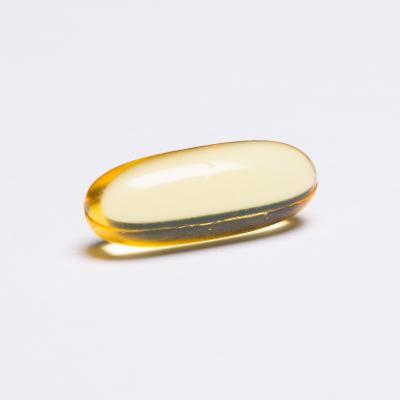
Omega-3 Fatty Acids Can Relieve Joint Pain
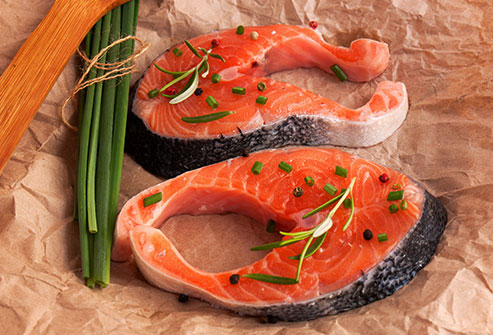
Fatty acids are essential nutrients derived from dietary intake of fats. They are an important source of energy for the body, and serve a variety of other biologic functions.
Greater dietary intake of omega-3 polyunsaturated fatty acids (PUFAs) has been linked to a reduction in both inflammatory and neuropathic pain, and has been shown to be beneficial for decreasing pain associated with rheumatoid arthritis, dysmenorrhea (pain during menstruation), inflammatory bowl disease, and neuropathy (Tokuyama 2011). Conversely, excessive levels of omega-6 PUFAs, such as arachidonic acid, are associated with inflammatory activities, an effect that can be offset by the simultaneous consumption of omega-3 PUFAs (Surette 2008).
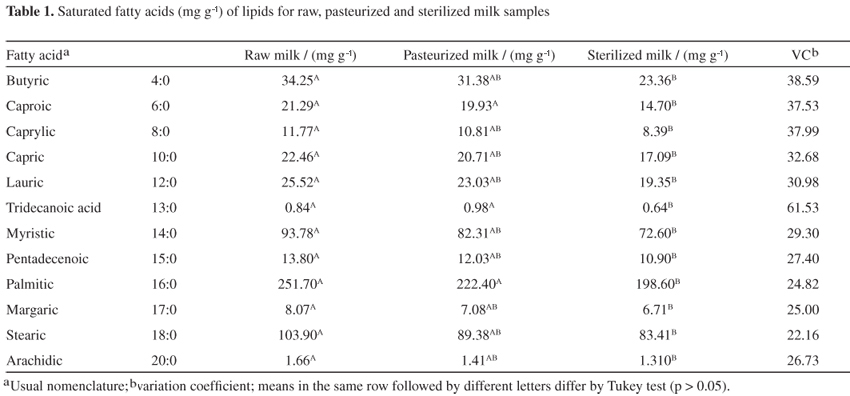
Omega-6 Fatty Acid Can Relieve Joint Pain
Gamma linolenic acid (GLA) is a plant-derived omega-6 most abundant in seeds of an Eastern flower known as borage. Although a member of the omega-6 family, it is metabolized differently than other omega-6s.
GLA plays an important role in modulating inflammation throughout the body, especially when incorporated into the membranes of immune system cells (Johnson 1997; Ziboh 2004). Early in 2010, a team of Taiwanese researchers discovered that GLA regulates the inflammatory “master molecule” nuclear factor-kappaB or Nf-kB, preventing it from switching on genes for inflammatory cytokines in cell nuclei (Chang 2010).
Pain Medications, Pain Relief, and Pain Management
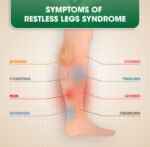




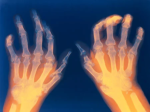
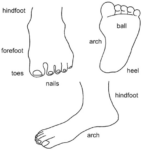


Joint pain can be caused by many types of injuries or conditions. It may be linked to arthritis, bursitis, and muscle pain. No matter what causes it, joint pain can be very bothersome. Some things that can cause joint pain are: Autoimmune diseases such as rheumatoid arthritis and lupus.